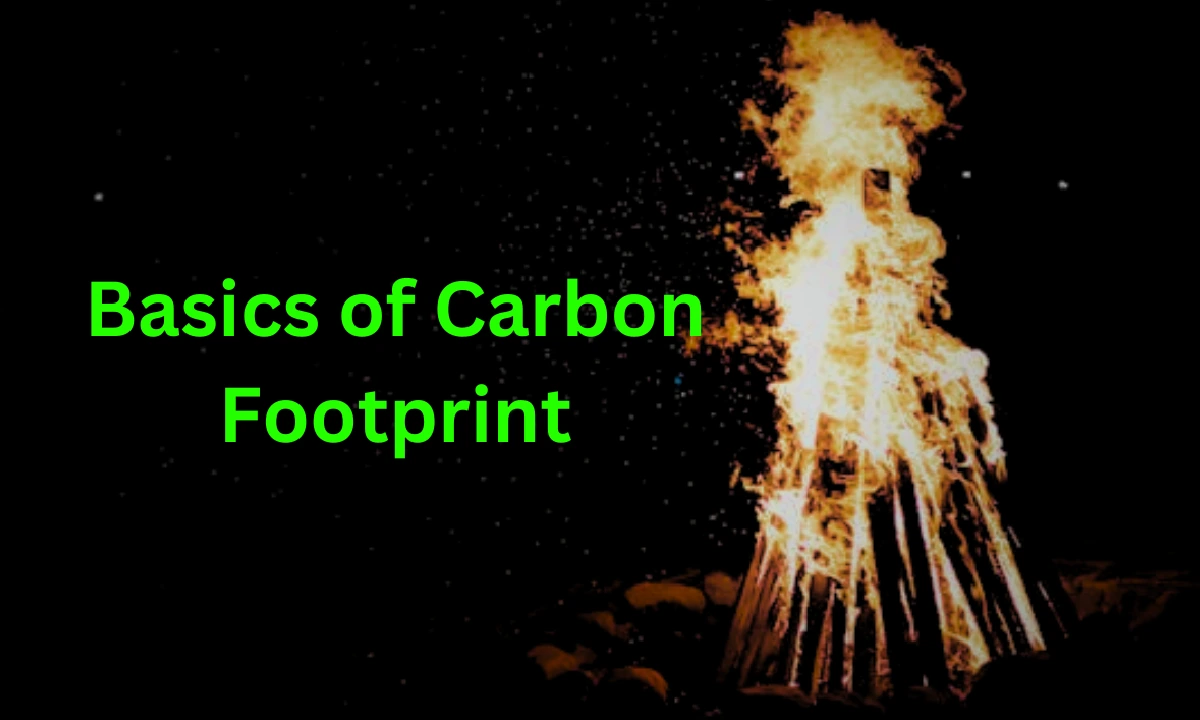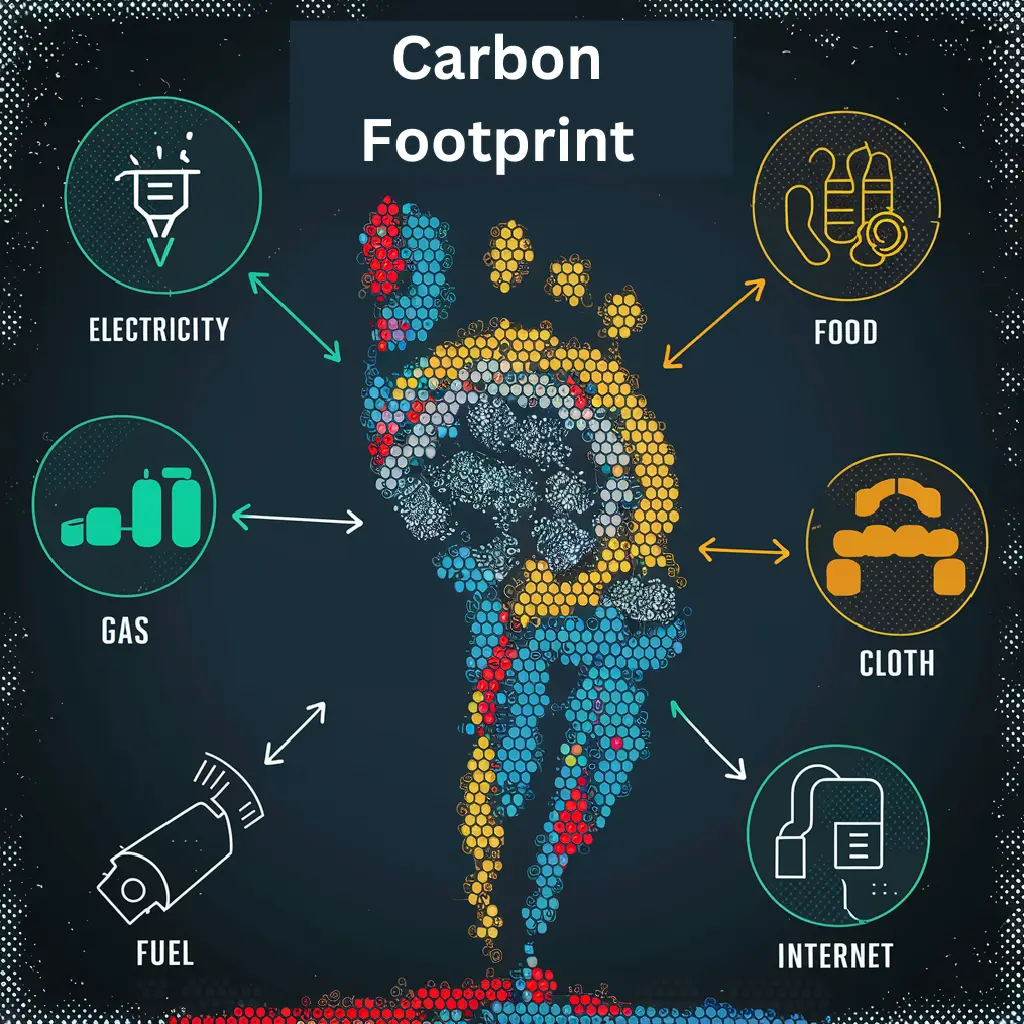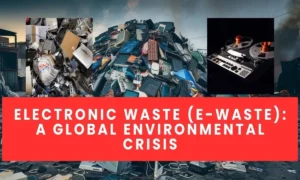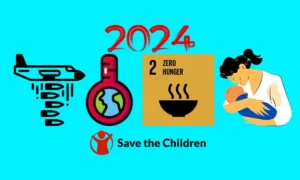Understanding the Basics of Carbon Footprint: What It Is and Why It Matters

Fossil fuels drive the modern industrial world. However, burning fossil fuels for energy releases pollutants into the air such as carbon dioxide (CO2).
Every individual has a CO2 or carbon “footprint”.
Your carbon footprint is the total quantity of greenhouse gases, such as carbon dioxide, you directly or indirectly produce.
Lifestyle means, like how you travel, what you eat, wear and shop, influence your carbon footprint.
The carbon footprint, or the total greenhouse gases produced by a person, is calculated on a per year basis for that individual.
This term refers mainly to the production of gases like methane and carbon dioxide. Released into the air, greenhouse gases alter Earth’s temperature.
Human activities are the main contributing factor to the rising CO2 levels in the atmosphere, altering the natural climate of the Earth. Not in a good way, obviously.
Carbon footprint reduction requires a reduction in CO2 emissions. Slowing down the Climate Change rate requires addressing our collective carbon footprint.
In environmental sustainability, or sustainable development schemes, “carbon footprint” makes frequent appearances.
But what precisely does this phrase signify, and why does it matter?
Let’s look at the some key reasons why Carbon Footprint matters.
But first we must understand the concept of Carbon and Carbon Dioxide first.
Carbon and Carbon Dioxide?
Carbon is one of the most abundant elements on our planet. It is a key element for various reasons.
It is a fundamental part of every living being.
Oxygen, as we know, is the reason we Earth can support life forms. But, when Carbon and Oxygen bond together, they form up a gas that is colorless, odorless; Carbon Dioxide (CO2).
Carbon Dioxide gas has a history with global warming and climate change mainly because it is a heat-trapping greenhouse gas (GHG).
Humans are one of the major producers of CO2 mainly because when we burn fossil fuels for energy production, we produce CO2. In very large amounts, CO2 poses great risk.
Coal, oil, and natural gas are sources of CO2. These are all the major fossil fuels burnt to produce energy for human activities.
Not only that, the natural mechanisms also produce greenhouse gases into the atmosphere. However, due to increasing population, modernization, and industrialization, humans produce an alarming rate of greenhouse gases in Earth’s atmosphere.
Carbon is stored in abundance in the atmosphere, soil, plants, oceans. It is present in bonded form with other gases, and is moving naturally from one region of earth to another. This natural movement of carbon is a continuous cycle called the carbon cycle.
However, as a result of human’s unbalanced energy production and consumption by burning fossil fuels, carbon dioxide’s presence in the atmosphere is rapidly increasing. This has resulted in warming the planet and causing an unnatural shift in Earth’s climate.
What is Carbon Footprint?
The carbon footprint is the quantity of CO2, and other greenhouse gases, emitted by an individual in a given year. Therefore, everyone has a carbon footprint of their own.
A carbon footprint is an environmental indicator that represents the amount of greenhouse gases (GHGs), expressed as CO2 equivalents, that are emitted directly or indirectly as a result of a specific activity.
Repsol

For an individual the indicator represents work, lifestyle, food preferences, purchases, transportation, and waste production, etc.
Human activities cause carbon footprint to grow bigger with each passing year.
The carbon footprint is the aggregate quantity of greenhouse gases, especially carbon dioxide (CO2). Other gases like methane (CH4) and nitrous oxide (N2O) also contribute to greenhouse effect.
According to The Nature Conservancy
The average carbon footprint for a person in the United States is 16 tons, one of the highest rates in the world. Globally, the average carbon footprint is closer to 4 tons. To have the best chance of avoiding a 2℃ rise in global temperatures, the average global carbon footprint per year needs to drop to under 2 tons by 2050.
Also Read: Ecological Footprint Explained
Why Does Carbon Footprint Matter?
The consumption of fossil fuel is the major reason that there is a shift in Earth’s natural capacity at keeping up with these excessive greenhouse gasses released into the atmosphere.
Developed countries, as industrialization being the main driver of the economy, are producing the highest amount of greenhouse gases into Earth’s atmosphere. And at a rapid rate.
This is despite the concerns shown by scientists and environmentalists. Rich and developed countries continue to ignore their impact on environmental degradation.
Carbon Footprints of a country, or a company or industry, are way bigger than common people.
But, every individual, to their own capacity, also has a responsibility.
Understanding carbon footprint is crucial for several reasons:
The carbon footprint is our mark on nature. It is an indicator of how much we affect the environment.
Naturally, forests and oceans help maintain a balance by sequestering carbon released by human activities. Plus, plants use up carbon for energy and growth.
However, due to environmental pollution caused by human activities, the natural carbon storing and cleaning processes are unable to tackle the excessive greenhouse gases constantly dumped into the atmosphere.
Climate Change
The primary greenhouse gas emitted through human activities is carbon dioxide.
Greenhouse gases in the atmosphere potentially reduce the earth’s natural ability to cool itself off by radiating energy from the Sun into space. Thus trapping heat in the Earth’s atmosphere and leading to global warming and climate change.
By monitoring and reducing our carbon footprint, we can mitigate the impacts of climate change. Climate change has brought extreme weather events, rising sea levels, glaciers’ melting, ect.
Environmental Degradation
High levels of carbon emissions also contribute to air pollution and environmental degradation for not only humans, but other living things as well.
Carbon dioxide is a major contributor to smog and acid rain. Acid rain harms human health and ecosystems at large.
Resource Conservation
Activities that involve releasing carbon emissions also require the utilization of natural resources such as fossil fuels, water, and land.
By reducing our carbon footprint or, in general, our energy needs from fossil fuels, we conserve natural resources.
Economic Impact
Transitioning to renewable energy sources like solar power, wind energy, etc, would improve our energy efficiency. This woud cut off environmental degradation costs as well.
Sustainable practices would create job opportunities, innovations, and lead to cost savings.
How Can We Reduce Our Carbon Footprint?
The scientific world is on the same page about Earth’s rising average temperature. And that climate change is real and mainly driven by humans.
The evidence and studies all point to global warming.
While natural phenomena are hard to predict and accounting for the whole planet’s climate changes are not easy. But then, even for the best of human minds, there are already severe consequences of greenhouse effect.
Climate has changed in parts of world. There is a shift seen in seasonality. Oceans are warmer and expanding, glaciers melting, sea-level rising, ocean acidity, etc.
Evidences and facts are there for everyone to witness.
Reducing our carbon footprint requires collective effort and a commitment to sustainable practices.
Here are some practical steps that individuals, communities, and organizations can take:
Energy Efficiency:
Use energy-efficient appliances and lighting, insulate buildings, and practice energy conservation habits such as turning off lights and electronics when not in use.
Use Clean Cars:
Using cars that run on clean energy means. It would help our street clean from vehicle exhausts.
Renewable Energy:
Use of renewable energy sources such as solar, wind, and hydropower. It would reduce reliance on fossil fuels for electricity generation.
Transportation:
Use public transportation, carpooling, biking, or walking whenever possible. For transport, use fuel-efficient vehicles or consider electric or hybrid options.
Sustainable Diet:
Reduce meat consumption, choose locally sourced and organic foods, and minimize food waste. This would lower the carbon footprint associated with food production and transportation.
Waste Reduction:
Adapt reduce, reuse, and recycle mantra. It helps minimize waste generation and associated carbon emissions from landfill decomposition.
Instead of throwing things away, we can recycle them. That means less energy consumed and less pollution.
Change Your Habits:
Smallest of things would help reduce your carbon footprint. Like buying eco-friendly things over more luxurious materials would help. Eating and wearing simple means you care for the environment. Say no to plastic.
In simple words, using cleaner cars, finding better ways to deal with trash, utilizing sun for power, recycling more, and making better choices overall means you are on your way to reducing your mark on nature.
Greenhouse effects already witnessed
The global warming is real. Climate change is upon us. And the greenhouse effect is already witnessed. There is no denying that.
Here is a brief look at some of the effects of greenhouse gases emissions have caused.
The weather is becoming more unpredictable, with stronger and weirder patterns. There are more dry periods. In parts of world, different seasons are seeing different weather conditions.
The oceans are getting warmer. This causes the sea levels to rise as glaciers melt.
More and more animal species are losing their habitats. More species are in danger of extinction than ever.
Epidemic and pandemics are happening.
The acidity of the oceans is also changing. All signs that our Earth’s overall climate is going through alterations.
Nature is changing. Or should we say, Nature has changed.
Humans are part of the blame. And humans have the responsibility to change things for the better.
Some of the major Greenhouse Effects we are witnessing today include;
- Higher temperatures
- Wilder unpredictable weather patterns,
- More droughts
- Warmer oceans
- Rising Sea levels
- Melting Glaciers
- Habitat lose for species
- More endangered species
- Less snowpack
- Changing Ocean Acidity
Therefore, understanding the basics of carbon footprint has become a necessity. Human population needs to address the current environmental challenges.
By taking steps in our daily lives to reduce our carbon footprint, we can definitely contribute, in smallest ways rightly so, in mitigating climate change, protecting the nature, conserving natural resources, and most importantly, building a more sustainable future for generations to come.






